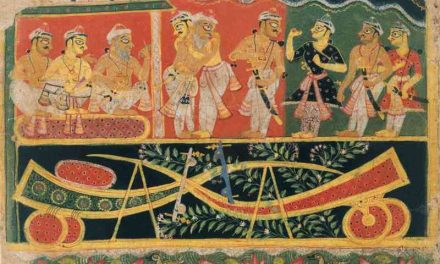The Skanda Purana is the largest and one of the oldest among the eighteen major Puranas, a genre of Hindu religious texts that narrate the ancient history and mythology of India. The Skanda Purana contains over 81,000 verses and is attributed to the sage Vyasa, who is also the author of the Mahabharata and the Bhagavata Purana. The Skanda Purana is named after Skanda, a son of Shiva and Parvati, who is also known as Kartikeya and Murugan. He is the war god and the commander-in-chief of the celestial army. He is also the patron deity of Tamil Nadu and Sri Lanka.
The Skanda Purana is not a single text, but a collection of various texts that have been compiled and edited over many centuries. The text exists in many versions and recensions, which differ in content and structure. The text covers a wide range of topics, such as cosmogony, genealogy, dharma, festivals, gemology, temples, geography, theology, and philosophy. The text also provides an encyclopedic travel guide with detailed descriptions of various pilgrimage sites (tirthas) in India, Nepal, and Tibet, along with their legends, stories, and hymns.
The Skanda Purana is divided into seven Khandas or books. The first Khanda, the Kartika Mahatmya, tells the story of Kartikeya’s birth and his victory over the demon Tarakasura. The second Khanda, the Sanatkumara Samhita, discusses the nature of reality and the path to liberation. The third Khanda, the Prabhasa Khanda, tells the story of the churning of the ocean of milk.
The fourth Khanda, the Nandikeswara Samhita, discusses the importance of devotion to Shiva. The fifth Khanda, the Vishnukranta Khanda, tells the story of the incarnation of Vishnu as Krishna. The sixth Khanda, the Avanthya Khanda, tells the story of the Pandava and Kaurava kings. The seventh Khanda, the Upamanyu Khanda, discusses the importance of pilgrimage.
The Skanda Purana is a source of wisdom and enlightenment for the devotees of Skanda and Shiva. The text reveals the nature and qualities of Shiva as the Supreme Lord and the source of true knowledge. The text also glorifies Skanda as the embodiment of courage, valor, devotion, purity, and compassion. The text teaches the importance of dharma (righteousness), bhakti (devotion), karma (action), jnana (knowledge), and moksha (liberation). The text also inspires the seekers to visit the sacred places associated with Skanda and Shiva, where they can experience their grace and blessings.
The Skanda Purana is a treasure trove of the spiritual and cultural heritage of India. It preserves the ancient traditions and rituals related to Skanda and Shiva, as well as the diversity and richness of Hinduism. The text also reflects the historical and geographical realities of India and its neighboring regions. The text is a living text that continues to evolve and adapt to the changing times and contexts. The text is a testimony to the faith and devotion of millions of Hindus who worship Skanda and Shiva as their personal gods.
Here are some of the key teachings of the Skanda Purana:
- The universe is a manifestation of Brahman, the ultimate reality.
- All beings are part of Brahman and are interconnected.
- The goal of life is to achieve moksha, or liberation from the cycle of birth and death.
- Moksha can be achieved through devotion to God, meditation, and selfless service.
The Skanda Purana also contains many stories about the gods and goddesses of Hinduism. These stories can help us to understand the nature of reality and the path to liberation.
The Skanda Purana is a valuable source of wisdom and enlightenment. It is a work that can enrich our lives and help us to live in accordance with the dharma. If you are interested in learning more about Hinduism, the Skanda Purana is a great place to start.
The Skanda Purana is a must-read for anyone who wants to learn more about Hinduism in general and Skanda-Shiva worship in particular. The text offers a comprehensive and fascinating account of the origin, history, mythology, theology, and philosophy of one of the most popular sects of Hinduism. The text also provides practical guidance on how to live a virtuous and fulfilling life by following the teachings and examples of Skanda and Shiva. The text is a source of wisdom and enlightenment for all seekers of truth.
Works Cited:
(1) Skanda Purana – Wikipedia. https://en.wikipedia.org/wiki/Skanda_Purana
(2) The Skanda Purana – Wisdom Library. https://www.wisdomlib.org/hinduism/book/the-skanda-purana
(3) Skanda Purana – Vyasa Mahabharata. https://www.vyasaonline.com/skanda-purana/





